Related Research Articles

CSX Transportation, known colloquially as simply CSX, is a Class I freight railroad company operating in the Eastern United States and the Canadian provinces of Ontario and Quebec. The railroad operates on approximately 21,000 route miles (34,000 km) of track. The company operates as the leading subsidiary of CSX Corporation, a Fortune 500 company headquartered in Jacksonville, Florida.
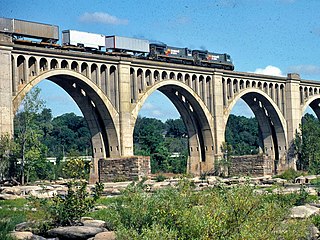
The Seaboard System Railroad, Inc. was a US Class I railroad that operated from 1982 to 1986.

The Seaboard Coast Line Railroad was a Class I railroad company operating in the Southeastern United States beginning in 1967. Its passenger operations were taken over by Amtrak in 1971. Eventually, the railroad was merged with its affiliate lines to create the Seaboard System in 1983.
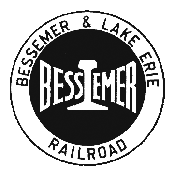
The Bessemer and Lake Erie Railroad is a class II railroad that operates in northwestern Pennsylvania and northeastern Ohio.
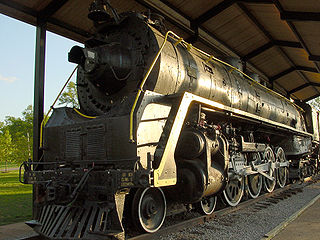
The Nashville, Chattanooga and St. Louis Railway was a railway company that operated in the U.S. states of Kentucky, Tennessee, Alabama, and Georgia. It began as the Nashville and Chattanooga Railroad, chartered in Nashville on December 11, 1845, built to 5 ft gauge and was the first railway to operate in the state of Tennessee. By the turn of the twentieth century, the NC&StL grew into one of the most important railway systems in the southern United States.
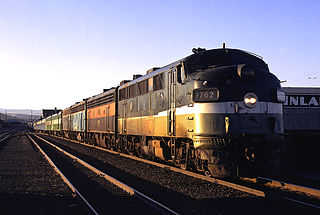
The EMD F3 is a 1,500-horsepower (1,100 kW) B-B freight- and passenger-hauling carbody diesel locomotive produced between July 1945 and February 1949 by General Motors’ Electro-Motive Division. Final assembly was at GM-EMD's La Grange, Illinois plant. A total of 1,111 cab-equipped lead A units and 696 cabless booster B units were built.

The EMD SW1 is a 600-horsepower (450 kW) diesel-electric switcher locomotive built by General Motors' Electro-Motive Corporation between December 1938 and November 1953. Final assembly was at EMD's plant at LaGrange (McCook) Illinois. The SW1 was the second generation of 3,402 cu in (55.75 L) switcher from EMD, succeeding the SC and SW. The most significant change from those earlier models was the use of an engine of EMD's own design, the then-new 567 engine, here in 600 hp (450 kW) V6 form. 661 locomotives of this design were built, with a gap in production between March 1943 and September 1945 due to World War II.

The SDP45 is a six-axle, C-C, 3,600-horsepower (2,680 kW) diesel-electric locomotive built by General Motors' Electro-Motive Division of La Grange, Illinois. It was a passenger-hauling version of the SD45 on a stretched locomotive frame with an extended, squared-off long hood at the rear, aft of the radiators, giving space for a steam generator for passenger train heating. This steam generator placement followed the pattern set by the SDP35 and SDP40.
The Clinchfield Railroad was an operating and holding company for the Carolina, Clinchfield and Ohio Railway. The line ran from the coalfields of Virginia and Elkhorn City, Kentucky, to the textile mills of South Carolina. The 35-mile segment from Dante, Virginia, to Elkhorn City, opening up the coal lands north of Sandy Ridge Mountains and forming a connection with the Chesapeake and Ohio Railway at Elkhorn City, was completed in 1915.

The EMD SD9 is a model of diesel locomotive built by General Motors Electro-Motive Division between January 1954 and June 1959. An EMD 567C 16-cylinder engine generated 1,750 horsepower (1.30 MW). Externally similar to its predecessor, the SD7, the SD9 was built with the improved and much more maintainable 567C engine.

The EMD SDP35 is a model of 6-axle diesel-electric locomotive built by General Motors Electro-Motive Division between July 1964 and September 1965. Power was provided by an EMD 567D3A 16-cylinder engine which generated 2,500 horsepower (1.9 MW). Essentially this locomotive was an EMD SD35 equipped with a steam generator, located in the extended long hood end, for passenger use. 35 examples of this locomotive model were built for American railroads.

The SD45 is a six-axle diesel-electric locomotive built by General Motors Electro-Motive Division between 1965 and 1971. It has an EMD 645E3 twenty-cylinder engine generating 3,600 hp (2,680 kW) on the same frame as the SD38, SD39, SD40, and SDP40. As of 2023, most SD45s have been retired, scrapped or rebuilt to SD40-2 standards.

The EMD SD45-2 is a 6-axle diesel-electric locomotive built by General Motors Electro-Motive Division (EMD). EMD built 136 locomotives between 1972–1974, primarily for the Atchison, Topeka and Santa Fe Railway (ATSF). The SD45-2 was an improved version of the EMD SD45; the primary visual difference is the lack of flared radiators on the SD45-2.
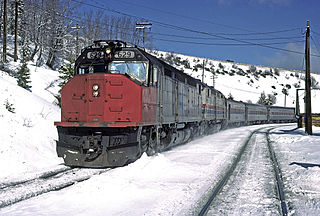
The EMD SDP40F was a six-axle 3,000 hp (2.2 MW) C-C diesel–electric locomotive built by General Motors Electro-Motive Division (EMD) from 1973–1974. Based on Santa Fe's EMD FP45, EMD built 150 for Amtrak, the operator of most intercity passenger trains in the United States. Amtrak, a private company but funded by the United States government, had begun operation in 1971 with a fleet of aging diesel locomotives inherited from various private railroads. The SDP40F was the first diesel locomotive built new for Amtrak and for a brief time they formed the backbone of the company's long-distance fleet.
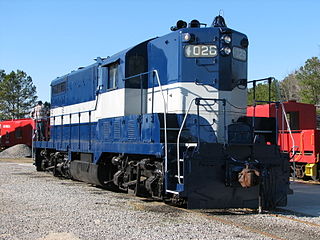
The Georgia Railroad and Banking Company also seen as "GARR", was a historic railroad and banking company that operated in the U.S. state of Georgia. In 1967 it reported 833 million revenue-ton-miles of freight and 3 million passenger-miles; at the end of the year it operated 331 miles (533 km) of road and 510 miles (820 km) of track.

The EMD GP16 are a series of rebuilt diesel-electric locomotives, a result of a remanufacturing program initiated by the Seaboard Coast Line Railroad (SCL) in an effort to spare the cost of purchasing new motive power in the late 1970s. This involved the rebuilding of their aging fleet of EMD GP7, GP9 and GP18 road switchers. 155 locomotives were rebuilt by the SCL.

The Southeastern Railway Museum is a railroad museum located in Duluth, Georgia, in suburban Atlanta.
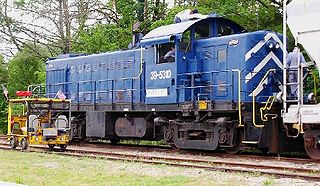
Southern Appalachia Railway Museum is a railway museum headquartered in Knoxville, Tennessee, United States.

Chesapeake and Ohio Railway 2716 is a class "K-4" 2-8-4 "Kanawha" (Berkshire) type steam locomotive built in 1943 by the American Locomotive Company (ALCO) for the Chesapeake and Ohio Railway (C&O). While most railroads referred to these 2-8-4 type locomotives as Berkshires, the C&O referred to them as Kanawhas after the Kanawha River, which flows through West Virginia. Used as a dual service locomotive, No. 2716 and its classmates served the C&O in a variety of duties until being retired from revenue service in 1956.
The Kentucky Steam Heritage Corporation (KSHCO) is a nonprofit organization based on the border between Irvine and Ravenna, Kentucky. The organization mainly focuses on the restoration of Chesapeake and Ohio K-4 2-8-4 steam locomotive No. 2716 along with other vintage railroad equipment. The organization has plans of turning the surrounding area into its own tourist attraction called the Kentucky Rail Heritage Center through a partnership with the R.J. Corman Railroad Group and CSX Transportation.
References
- ↑ Lewis, Edward A. (1996). American Shortline Railway Guide. Railroad reference series. Vol. 17. Kalmbach Books. p. 231. ISBN 978-0-89024-290-2.
- ↑ "CTC Board May 1997". CTC Board . 1997. p. 19. ISSN 0164-8373. OCLC 4315418.
- ↑ "Haysi, Virginia". Clinchfield Country Home Page. Retrieved 2019-09-06.